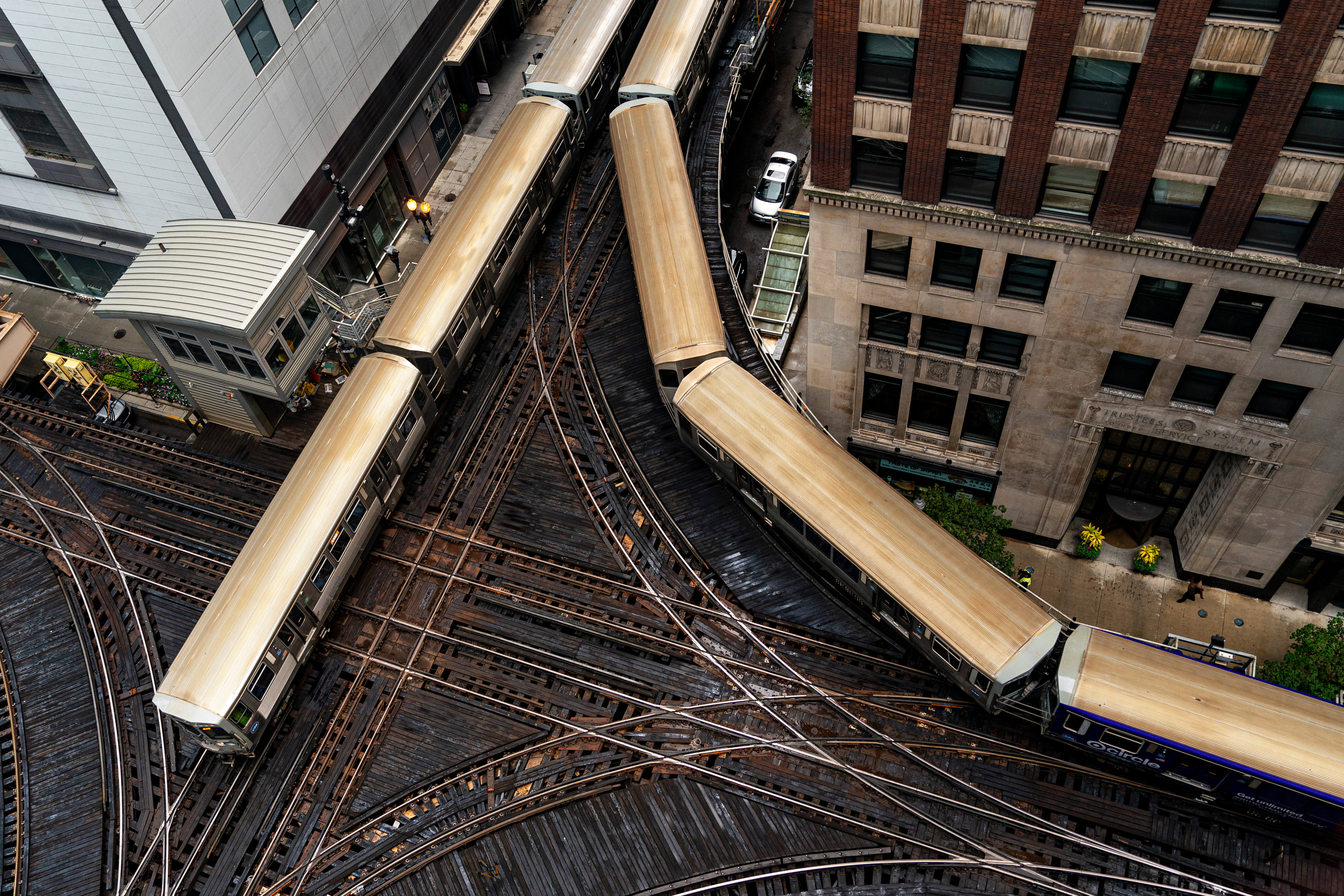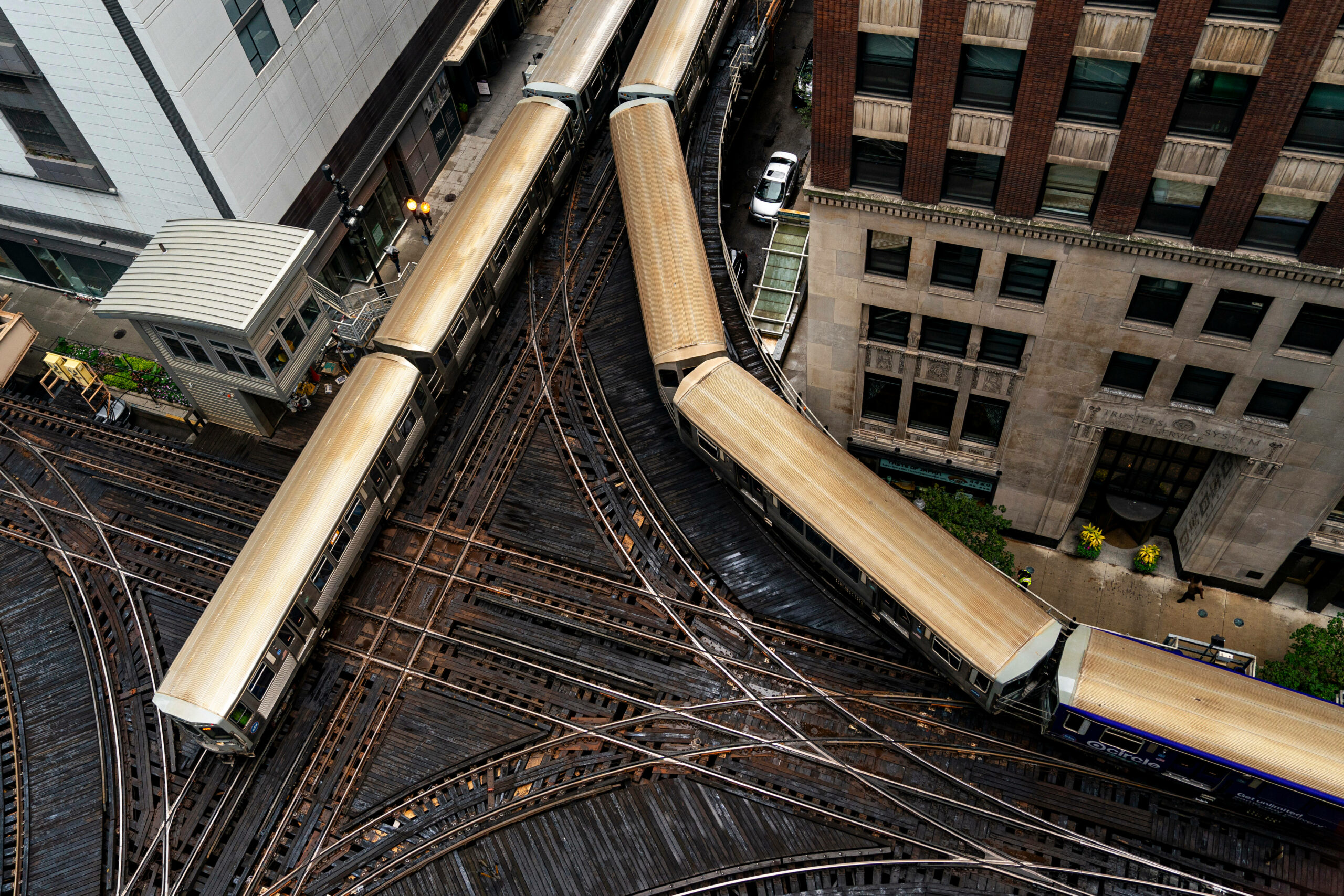
Legislators were unable to hash out a solution for Chicago’s transit crisis before leaving Springfield on Saturday at the end of their regular session, leaving a looming fiscal cliff that, if not resolved, could leave transit riders in Illinois under a “doomsday scenario.”
So what happens next?
Here’s what to know:
What can lawmakers do?
Technically, the money doesn’t run out until the end of the year, and there will likely be a veto session that could provide another shot at an 11th-hour rescue. But transportation officials say they’ll have to start laying out the specific cuts next week if the funding doesn’t come through by then.
“It’s not a light switch we can just turn on or off,” said Leanne Redden, executive director of the Regional Transportation Authority, which oversees planning and funding for the area’s transit agencies. “Even if we find funding at a future point, it’s a slow process to kind of unwind the unwinding.”
But that’s not the only complication.
Because the measure had passed the Senate, but was not called for a vote in the House, it will now have to achieve a three-fifths vote rather than a simple majority if it’s taken up again.
It is unclear whether the measure will be taken up as is in later sessions of the legislature, or if lawmakers will come up with a new proposal.
What’s in the proposal?
The legislation would have used a tax on food and package deliveries in the state to help close a projected $770 million shortfall caused by the expiration of COVID-era funding, but despite passing the Senate the measure stalled out in the House, leaving lawmakers to mull their next steps.
Another version of the bill had also included a $0.50 surcharge on tolls paid on Illinois Tollways and a diversion of some property tax funding from so-called “Collar Counties” around the Chicago area.
The bill tabled in the House included a unified Northern Illinois Transit Authority that would have overseen Metra, the CTA and Pace, along with a $1.50 tax on food and package deliveries statewide.
The bill was championed by State Sen. Ram Villivalam, the chair of the Senate’s Transportation Committee, who has been working with stakeholders on a bill to stave off service cuts and layoffs when COVID-era funding expires.
His bill emphasized the creation of the NITA to oversee transit and to smooth out challenges of operating the different systems that make up the Chicago-area transit network, which features Metra commuter trains, CTA trains and buses within Chicago, and Pace buses in the suburbs.
“We’ve said from the beginning: no funding without reform. Central to that reform is this governance structure,” he had said.
The new board would be composed of 20 members, five of whom would be appointed by Illinois’ governor. Five more would be appointed by Chicago’s mayor and another five by the Cook County Board President, along with five members appointed by leaders from each of the five “collar counties” around the suburbs.
The makeup of the board also invited a tsunami of criticism, including from State Sen. Don DeWitte.
“The amendment to House Bill 2111 appears to confirm our initial fears that this is a Chicago-Cook County takeover of regional transit funding and operations because the voting thresholds appear to be heavily skewed toward Cook County and the city of Chicago,” he said.
Versions of the bill had also included taxes on rideshare rides taken within Cook County and the collar counties, along with changes to how much of the transit system’s operating budget would be required to come from “farebox recovery,” according to lawmakers.
So far, there have been no major breakthroughs on funding, although a compromise surfaced to create a new umbrella organization that, among other things, would ensure the various agencies work in unison rather than as competitors for the same customers.
“They should just be able to get on and go where they want to go, and that has not been happening with the governance that we’ve had up to now,” Gov. J.B. Pritzker said.
Chicago’s transit agencies argue they’re more efficient than their peers in other states and get by with a smaller portion of state funding.
What happens if no funding is passed?
A report from the Regional Transit Authority has warned that thousands of workers could receive layoff notices in coming months if new funding isn’t authorized, and also warned of dire cuts to transit services in the area. That could include suspension of multiple CTA train lines, cuts to more than 70 bus routes, and reduced Metra service, especially during early morning and late-night hours.
RTA Executive Director Leanne Redden warned at least four of eight CTA train lines could close, as many as 74 of CTA’s 127 bus routes would be eliminated, and car traffic on roads would surge.
“That would take it from being one of the largest transit systems in the country to having fewer bus routes than say, Madison, Wisconsin,” Redden told NBC Chicago.
Also fueling uncertainty is concern that President Donald Trump’s administration could slash funding for transit systems, further eroding funding sources for state government to utilize.
“The doomsday is very real,” said transportation expert Joe Schwieterman with DePaul University. “The numbers speak for themselves. Without that funding, we are looking at 30-40% cuts.”
In a release, CTA acting president Nora Leerhsen said a 40 percent service reduction would be “unconscionable.”
So what would such cuts look like?
The RTA said an average bus rider in the city would feel the pain in longer wait times, such as 25 minutes for a bus that used to be 15.
In the suburbs, a 45-minute wait would grow to over an hour.
And a Metra line that previously ran 90 trains per day would go down to 54.
Without additional state funding, Pace could be forced to halt buses on weekends and after 8 p.m. on weekdays, executive director Melinda Metzger said.
“The downside for this is disastrous,” she said in an interview at the Harvey stop. “You would be cutting back your service by at least 40%, not giving people viable rides. They might get to work, but they might have a late-night shift and can’t get home, so ridership also would plummet to match the service cuts.”
What’s happening in other cities?
Major public transportation agencies across the country have had varying degrees of success lobbying their legislatures for more support with the federal emergency funding set to expire at the end of the year.
The metropolitan area that most closely mirrors Chicago’s current situation is Philadelphia, which faces a $213 million transportation budget deficit next year, even after Pennsylvania Gov. Josh Shapiro authorized redirecting some of the state’s highway money to mass transit. Absent more funding, riders could see a 20% spike in fares, a 9 p.m. curfew, and the elimination of 50 bus routes and five regional rail lines, the Southeastern Pennsylvania Transportation Authority has said.
New York Gov. Kathy Hochul signed a bailout package in 2023 to help fund New York City’s subway and buses. She also opened a major new source of transit revenue by implementing congestion pricing for drivers in Manhattan, but it remains to be seen whether the new tolls will survive threats from President Donald Trump’s administration to shut them down.
Boston, San Francisco, Washington, D.C., and numerous other transit-dependent cities have also been scrambling to avert major cuts.




